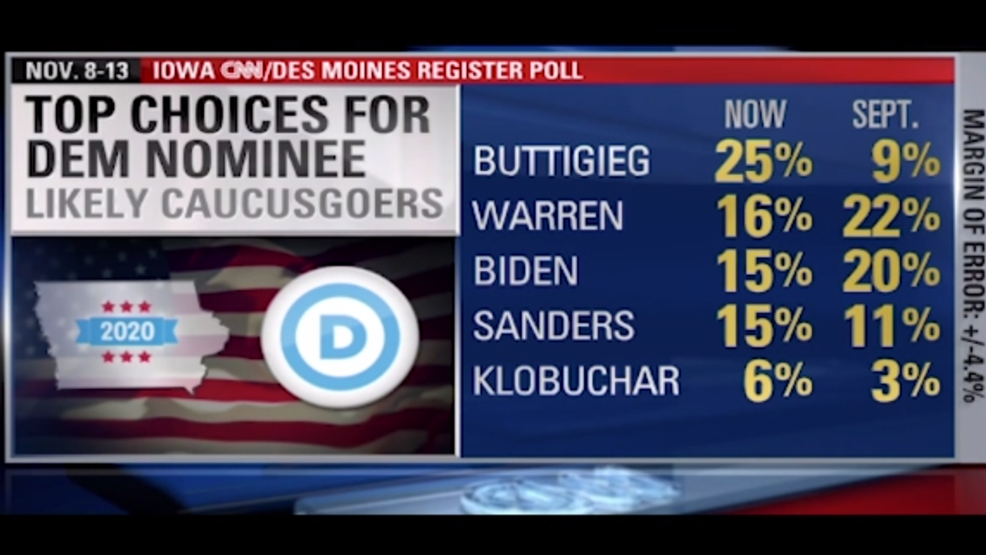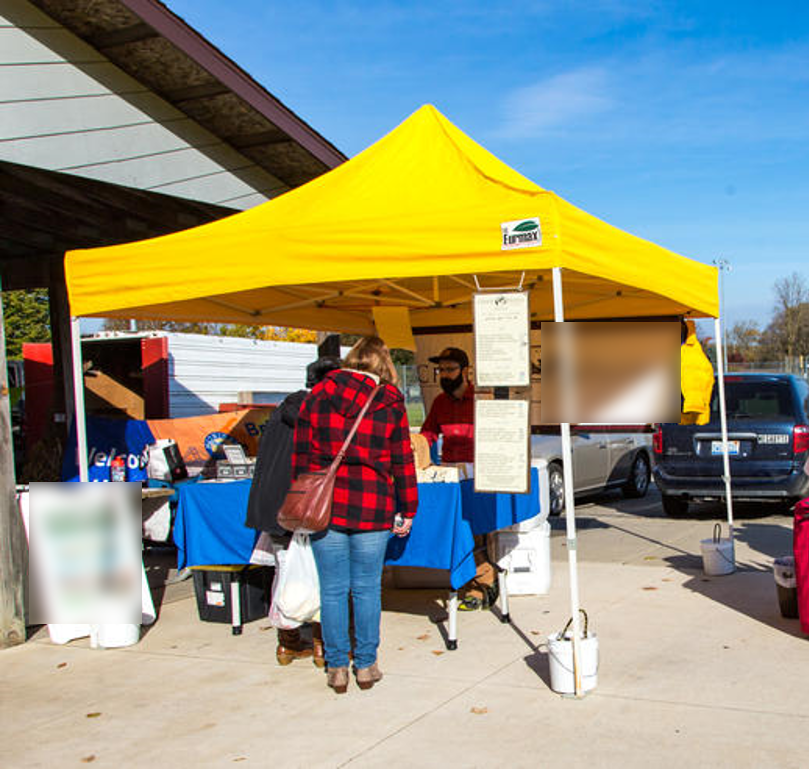
As we careen into 2020 and aggressive new budgets, many in radio are talking “political.” It’s an ad category where optimism swells and hope runs eternal. In an otherwise challenged advertising environment, the hope is that the fervor around the national election, as well as local races and initiatives, will save the day – or the year – for commercial radio broadcasters.
Of course, radio sales teams are competing for these truckloads of dollars, not just with other radio stations, but with TV, Facebook, Google, and myriad other online sources and outlets. As counter-intuitive as it may seem, a medium that’s been instrumental in advertising for political campaigns for at least eight decades must prove its value in 2020.
And like a lot of things that go on in politics, there are clear analogies to the radio industry as well. This year, it’s the Democrats with an over crowded field of more than 20 candidates. While a few have dropped out, two new players – Michael Bloomberg and Deval Patrick – apparently jumped into the fray last week.
What are they thinking? They believe – delusional or not – that the race is very much up for grabs, that anything can happen, and that a well-financed, strategically sound campaign can win this thing in the end.
Another reason they may be inspired is by looking at the most recent Iowa caucus poll data released late last week. It clearly showed there’s an apparent new leader in the race, the mayor of Indiana’s fourth largest city, Pete Buttigieg.
Mayor Pete, as he’s called by just about everyone who cannot pronounce his name, is seemingly the least likely candidate to take the lead with 70-something days left before those crafty Iowans give us their conclusions. He is too young (37 years-old), he openly talks about his marriage to a guy named Chasten, has never held national office, and is simply not a “name,” unlike so many running against him.
In fact, most people cannot pronounce his name – often simplified to Boot-Edge-Edge. And even that’s a mouthful.
But as I write this, he is emerging as the unlikeliest of frontrunners, and these early results (remember that Iowa often “breaks late” so anything can happen between  now and February) are worth our time.
now and February) are worth our time.
While they may shift several times between now and the caucuses, the fact is that a true dark horse candidate has vaulted into the top spot. Interestingly, his other impressive stat is dollars raised and cash on hand.
Somehow, Mayor Pete has managed to amass what many feel is the best “ground game” in Iowa. Yet, he is pulling that off while continuing to successfully fund raise, while not overspending as a result.
A story a few weeks ago in the New York Times by Reid Epstein and Gus Wezerek broke down each candidate’s organizations in the early primaries. In “Which 2020 Candidates Have the Ground Game Lead in Early Primary States,” Buttigieg and Elizabeth Warren were tied at 47 campaign offices, followed more distantly by the rest of the pack. In Iowa, Mayor Pete was ahead of Warren (22-19).
While the rank order of these candidates in the polls isn’t exactly reflected in the number of campaign offices they’ve set up, the basic pecking order is very similar.
It also appears he has more paid organizers than his rivals, another data point that strengthens his ground game. Gary Gelner, a Democratic Party chairman in one of Iowa’s counties explained it this way:
“These caucuses are very personal.”
You bet they are. And that’s precisely why there’s an interesting connection between radio and politics. Many of you know Larry Rosin and his partner, Joe Lenski of Edison Research. In addition to conducting hundreds of radio perceptual studies, Edison has been the company behind the broadcast and cable networks’ political exit polls, nationally and throughout the primaries. They’ve been doing it since 2004. That’s a lot of data and a lot of lessons learned.
The analogies between politics and radio is something Rosin has long espoused. Many years ago, he told me that the #1 variable that affects the vote, once you get past party affiliation, is meeting the candidate.
 It’s why the savviest of the candidates build, tweak, and perfect their ground games. At a time when so much of the political conversation is national or international, Iowa is especially focused on shaking hands, stump speeches, town meetings, and country fairs.
It’s why the savviest of the candidates build, tweak, and perfect their ground games. At a time when so much of the political conversation is national or international, Iowa is especially focused on shaking hands, stump speeches, town meetings, and country fairs.
NRG Media is based in Cedar Rapids, Iowa, and its former COO, Chuck DuCoty, used to tell me about how it became a ritual for him to see each and every candidate in person during this crazy primary season. For Chuck, part of it was the spectacle of the campaigns, but I suspect he was also looking for some level of authenticity from the many candidates running around the Hawkeye State, in search of votes. You don’t really know them until you shake their hands.
And that’s why this concept of a ground game, a strong local organization, and brigades of enthusiastic young staffers shouldn’t be lost on any of us in radio.
At a time when you can drive an entire metro and not see a stitch of advertising for radio’s global competitors – Spotify, SiriusXM, Audible, Pandora, TuneIn – it makes you wonder why local radio stations haven’t doubled down on their own ground games, owning the streets in their own markets.
Sure, many radio stations have degrees of hometown visibility, much of it leveraged on scores of unending sales commitments and appearances, almost always designed to help a client more than the station itself. But these sponsored events have become so plentiful, their effectiveness as marketing vehicles have become diluted.
And it’s no surprise how many stations don’t even have a van anymore, or are driving one that’s missed more than a few oil changes. Or they’re tethered to a tattered tent and rickety card table because no one in the organization perceives the need to look great, show well, fire up a crowd, and pass out merch. In other words, it’s a campaign for ratings.
Ultimately, that’s what Larry Rosin will tell you. Getting ratings is a popularity campaign, especially in diary markets, but in the big metered metros as well. Encouraging consumers to listen to you – much less switch from another “candidate” – requires an introduction, a hand shake, and eye contact. Earning their loyalty means showing up repeatedly, connecting with crowds, and winning them over.
Unlike the political candidates who have to be strategizing about creating presence and impact in all those early primaries, followed by a series Super Tuesdays in many, many states, radio stations need only concern themselves with their home market metros.
Yes, it tough to have a strong market presence in Chicago or Miami. But it’s much easier in any market named Springfield, Greenville, or Fayetteville.
If you run the numbers – station vehicle(s), tents, tables, banners, displays, bumper stickers, and merch, along with teams of interns and an organizer or two – you’re  not about to break the promotional bank by committing to having the best ground game in your market.
not about to break the promotional bank by committing to having the best ground game in your market.
And because so many radio companies simply don’t think this way anymore, it’s not hard to stand out on the streets, highways, byways and factories in your market. So few stations are doing it well these days.
As you’re reading this, scores of radio stations in PPM markets are discovering the value of presence in key zip codes and neighborhoods that house valued panelists. And some will tell you their stealth ground games are showing signs of effectiveness in the chase for meters.
Imagine if they expanded these efforts to not just areas where meters reportedly exist, but the entire metro, they’d be laying the sustainable groundwork for local dominance, guaranteeing visibility and familiarity every time Nielsen executes a panel shift, or adds a new PPM or diary home.
None of us has a clue who the Democrats will nominate for the nation’s highest office next year. As we have learned, anything can happen – and probably will.
But we do know that a virtual unknown without the credentials or the usual resume has vaulted into the pole position in Iowa – and it’s been largely on the strength of his community campaigning.
The candidate with all the TV money doesn’t always win – just ask Jeb Bush, Hillary Clinton, ,Tom Steyer, and perhaps even Michael Bloomberg.
The Democrats now talk about the need to run a “50 State Campaign” – that is show up everywhere before ballots are cast next November – learning from their 2016 mistakes.
For radio, it’s a lot less complex and expensive. Running a great “one market campaign” is well within the reach of most stations. And it can produce results – and votes.
You won’t have to show up for any debates, do town halls, or show up at spaghetti dinners, and you just might leap head of the ratings pack.
- What To Do If Your Radio Station Goes Through A Midlife Crisis - April 25, 2025
- A 2020 Lesson?It Could All Be Gone In A Flash - April 24, 2025
- How AI Can Give Radio Personalities More…PERSONALITY - April 23, 2025




Ken Carson once told me listeners were made one at a time. You go out to where they are look them in they eye and ask them to listen. All politics including radio is retail…One at a time. The technology now avails you the opportunity to take the show on the road. I’m doing it today from the Carolina/Clemson Blood Battle in support of the Red Cross. Could I have just sat in the studio and done promos and liners? Sure but without the interaction and without the digital takeaways in video and pictures. Go live. Shake hands and kiss babies.
That’s a smart observation from Mr. Carson. And you’re right that in this overcluttered, digital environment, eye contact is critically important.
There are so many analogies that apply to radio (or TV or broadcasting in general). It’s plain to see how the medium is failing to burst through the clutter. Promoting a station is like a political campaign. Programming a station is like a football game. The most visible with the best strategy always wins. It’s been that way for decades. Nice work in putting this together, Fred.
Appreciate that, Dave. I love both radio AND politics, so it was a “labor of love.”